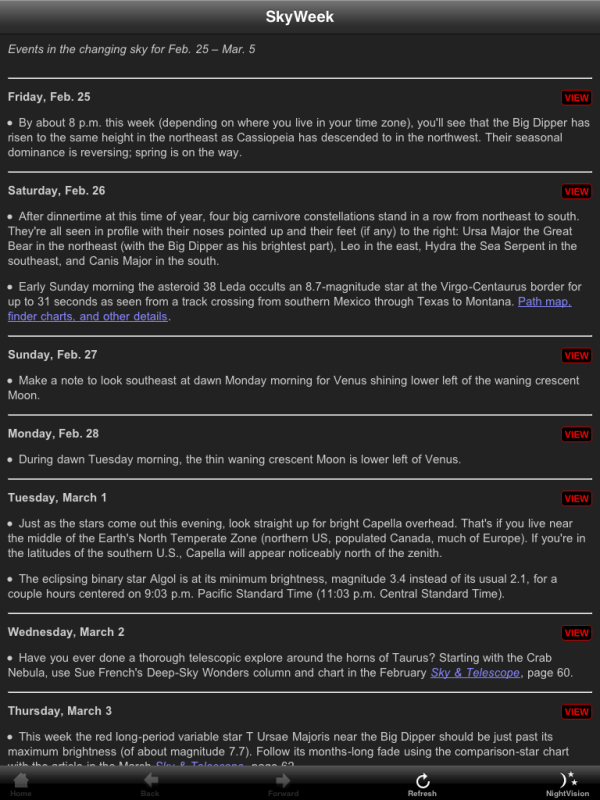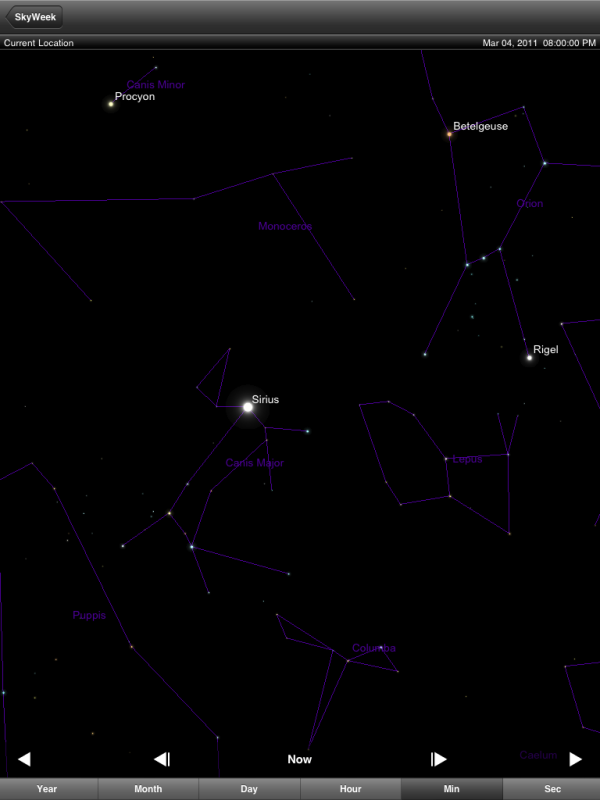One of the nice things about many astronomy apps for the iPhone & iPad is the ability to tie the built-in GPS, compass & motion sensors to allow a novice user to go out under the sky and identify what is up right then and there. I will be talking about some of those apps in the near future, but I am going to start off with a simpler, but useful app called Sky Week.
The Sky Week app comes from the folks at Sky & Telescope magazine. Its function is to give novice & expert stargazers a look at what is of interest in the night sky for the coming week.
The app loads and if necessary updates quickly, giving the user a display like the one shown here:
What you see is a description of event or two for each of the days in a nine day period. Further down (below this screen grab) is visibility information on our solar system's eight planets. The app is updated weekly and does not allow you to scroll forward or backward in time to get lists for other weeks. You can easily set the view to display red text on a black background - a handy feature that allows you to use the app while keeping your eyes adapted to seeing in the dark.
Each of the events listed contains a red VIEW link on the right that opens a simple interactive star chart that is tied the date & time for the event. Here is a screen grab for the star chart for the event for Friday, March 4, 2011:
It brings up a star chart showing where in the sky to find the star Sirius. You can pinch to zoom, scroll around the sky with your fingers and use the interface at the bottom to adjust the time you are viewing the chart. Most often the star chart that pops up is for your current location, but the descriptions are generally written for observers located in the middle of North America.
While finding Sirius is pretty basic (after all it is the brightest star in the night sky), the app contains more detailed information that will please more seasoned amateur astronomers such as when and where to spot an asteroid occultation (when an asteroid can be seen to pass in front of a star) or when the eclipsing binary star Algol hits maximum or minimum brightness.
Sky Week runs smoothly on the iPhone and the iPad where runs in the iPad's native resolution and is one of the few astronomy apps that I actually use every week. It is available from the iTunes App Store for just $0.99.
Note the version that I reviewed is 1.0.2.



No comments:
Post a Comment